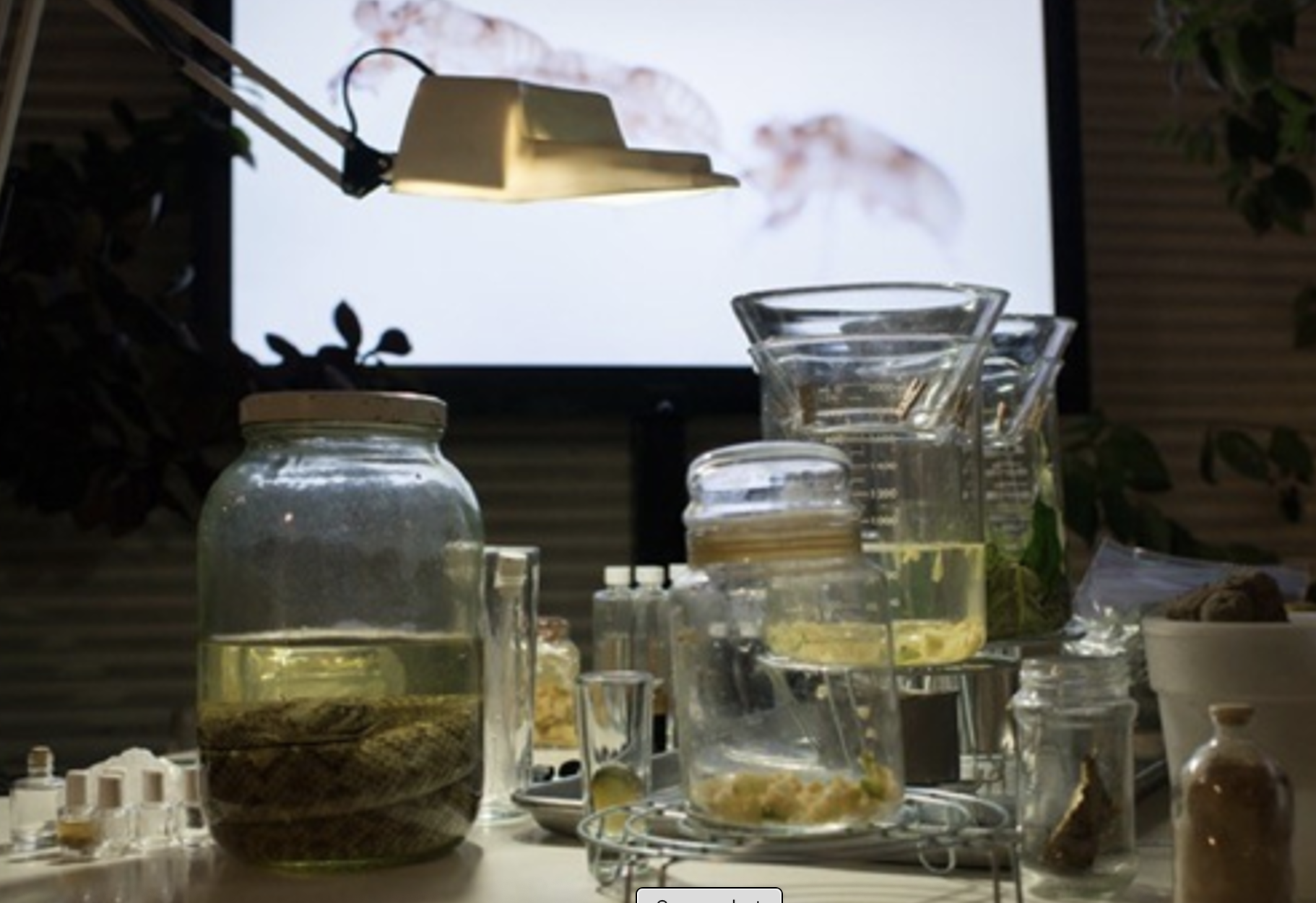
Category: Interactive
-
Practical Paganism

Exposition name: Practical Paganism
-
Pharmakon

Exposition name: Pharmakon
Location: Centre Cultural Maristany, Barcelone
Date: 2016
Curators: Juan Canela, Andrea Novoa and Verónica Valentini
Description: PHARMAKON is an ongoing artistic research project exploring the boundaries between pharmacy and the use of psychoactive substances. It opens a critical dialogue around the concepts of “drug” and “medicine,” functioning as an experimental laboratory that investigates the dual nature of healing and toxicity—where cure and poison often coexist. -
Garden of Oblivion

Exposition name: Garden of Oblivion
Type: Garden Intervention -
Future Goddess
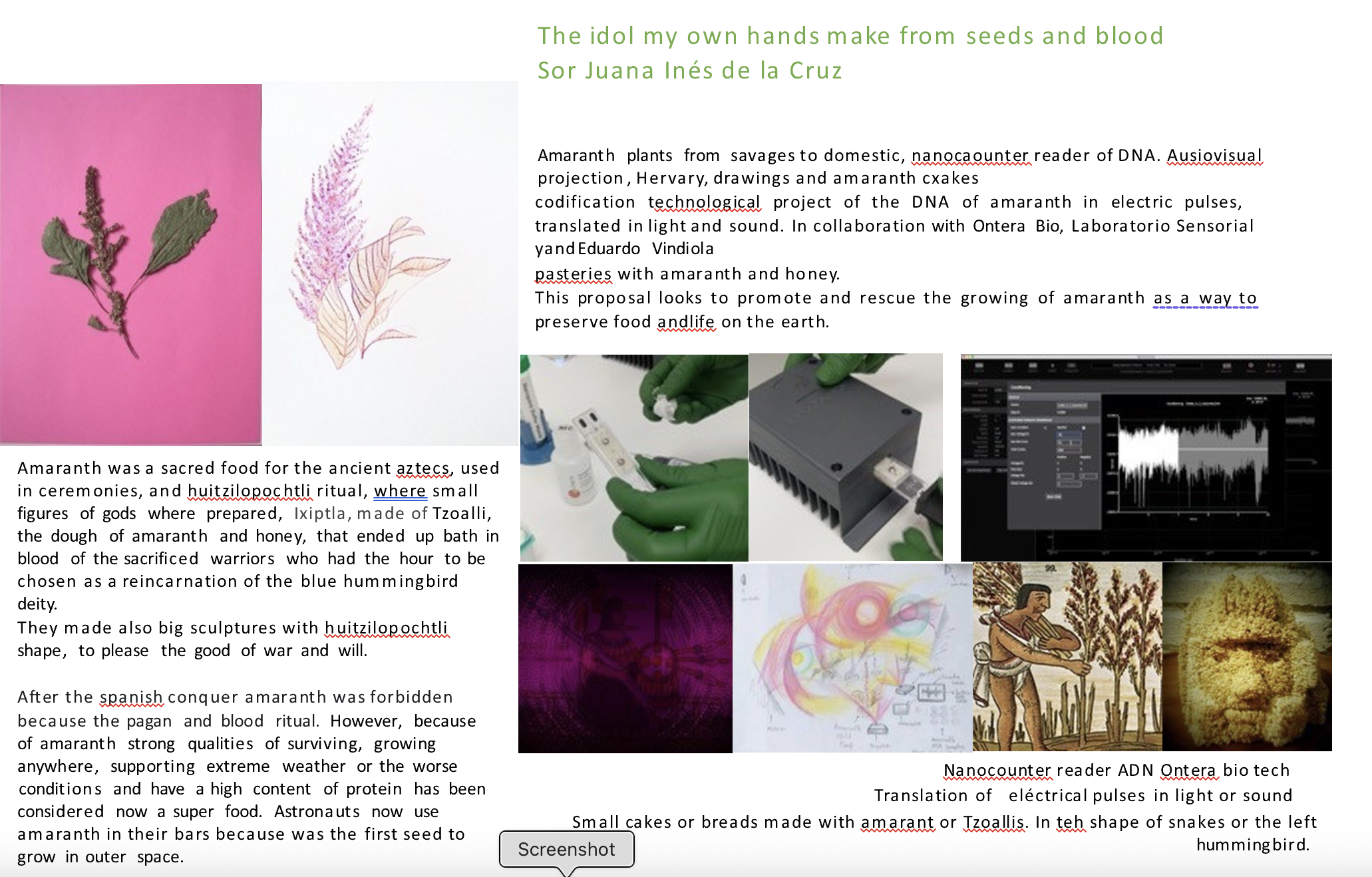
Exposition name: Future Goddesses
Type: Nano counter ADN reader.
Materials: Biotech
Date: 2019
Description: The Mayan legend of the Ololiuhqui or Xtabentún flower tells of two sisters: Xtabay, kind, generous, and misunderstood for her open-heartedness, and Utz-Colel, praised for her purity but inwardly cold and envious. When Xtabay died, her body released a sweet fragrance, and from it bloomed a delicate white flower—the sacred Xtabentún, used ritually by the Maya for its psychoactive seeds containing LSA. She became a compassionate goddess, guardian of desperate souls. Jealous, Utz-Colel vowed that a more beautiful flower would grow from her body. Upon her death, a stunning cactus appeared, but with a foul odor—the Tsacam, reflecting her true nature. Furious, she pleaded with the Lords of the Underworld and was allowed to return in Xtabay’s form, but as a demon. Since then, she appears beneath the Ceiba tree, luring intoxicated men into the underworld. The legend contrasts superficial virtue with genuine compassion and honors the spiritual power of love and generosity. -
Psychotropical Apothecary (Pharmakon)
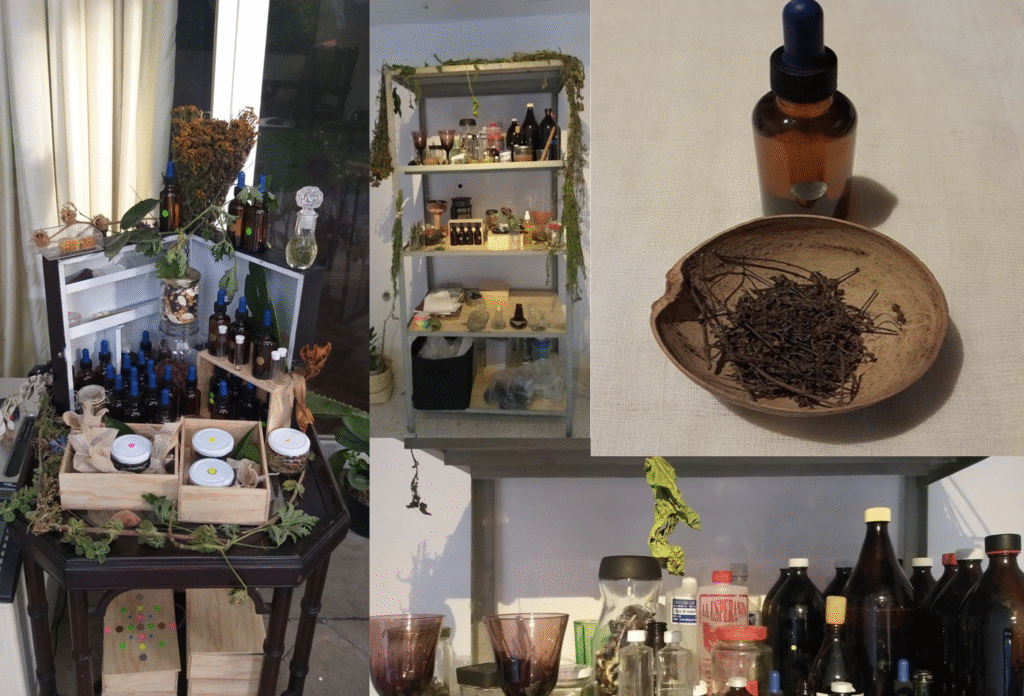
Exposition name: Psychotropical Apothecary (Pharmakon)
Type: Different art spaces
Date: 2020
Description: Mobile and permanent installation that brings together tinctures, micro-dosing practices, and live performance in an experiential and participatory format. Since its inception in 2020, it has been presented in various art spaces, inviting more than 3,000 participants—99.9% of whom have reported positive effects. This ongoing project offers a curated selection of plant-based preparations designed to heal the body, expand consciousness, and support neuro-hacking. Drawing from ancestral herbal knowledge and contemporary experimentation, the apothecary includes tinctures and extracts of Calea zacatechichi (the “herb of dreams,” used to induce vivid dreaming and activate the pineal gland), Psilocybe cubensis Mexicana (San Isidro mushrooms, known for boosting serotonin. -
Bioceno
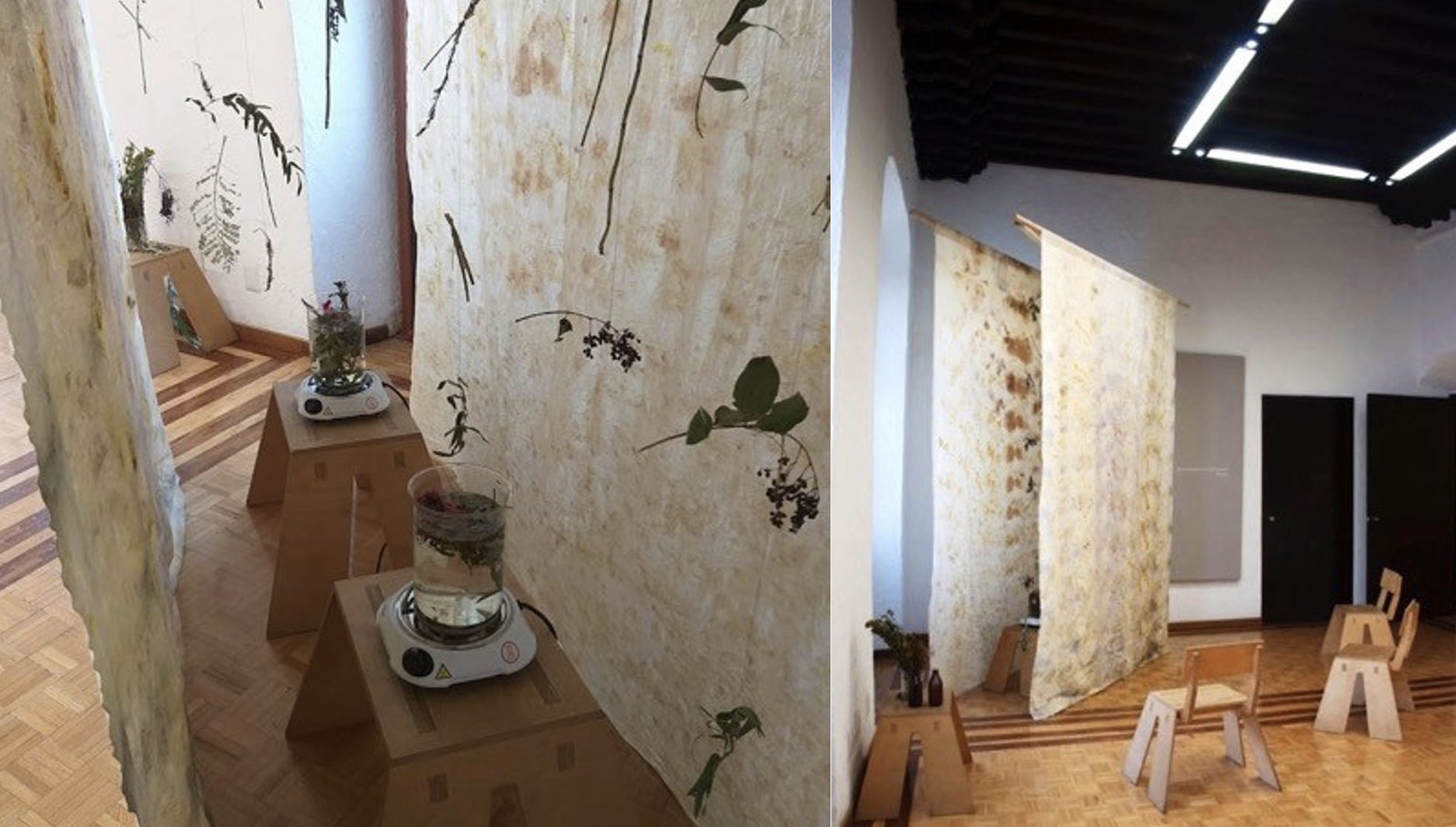
Exposition name: Bioceno
Location: Museo de la Cancillería, Mexico City
Date: Mar 2020
Curator: Jeannette Betancourt
Description: An immersive installation featuring cotton fabrics dyed with medicinal plants and accompanied by vapor vases designed for inhalation rituals. The aromatic steam carries the healing properties of pirul, eucalyptus, bougainvillea, pericón, cempasúchil, elderberry, horsetail, and orange blossom, evoking traditional cleansing practices for physical and spiritual renewal. -
Spandemia
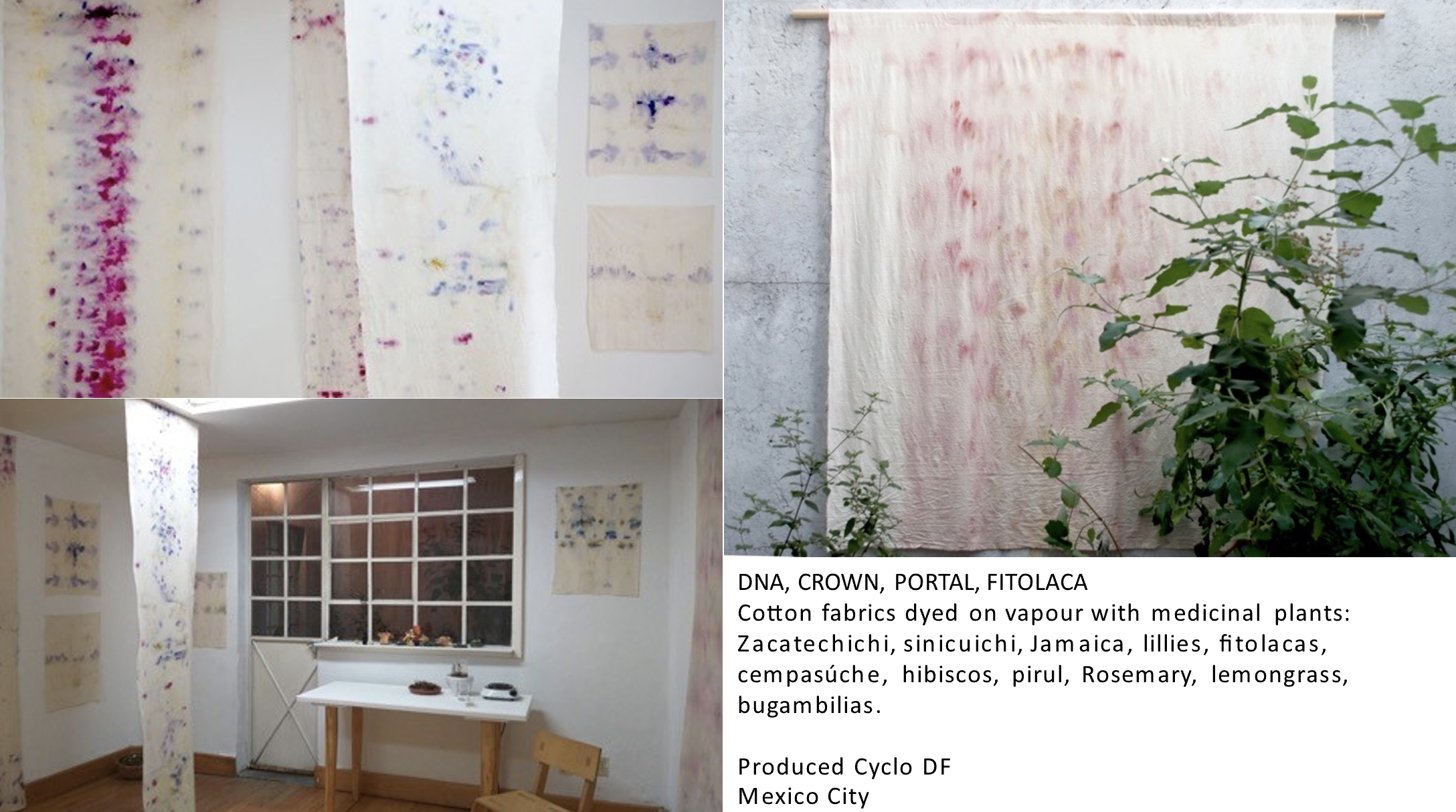
Exposition name: Spandemia
Location: Cyclo DF, México City
Date: Mar 2021
Material: Dyed cotton in vapor and fabrics with the medicinal plants.
Producer: Cyclo DF
Description: Installation of a consultation room featuring hand-dyed cotton fabrics using plant-based pigments, accompanied by ceramic pieces and a curated apothecary of herbal preparations. -
Virtual Museum Residency
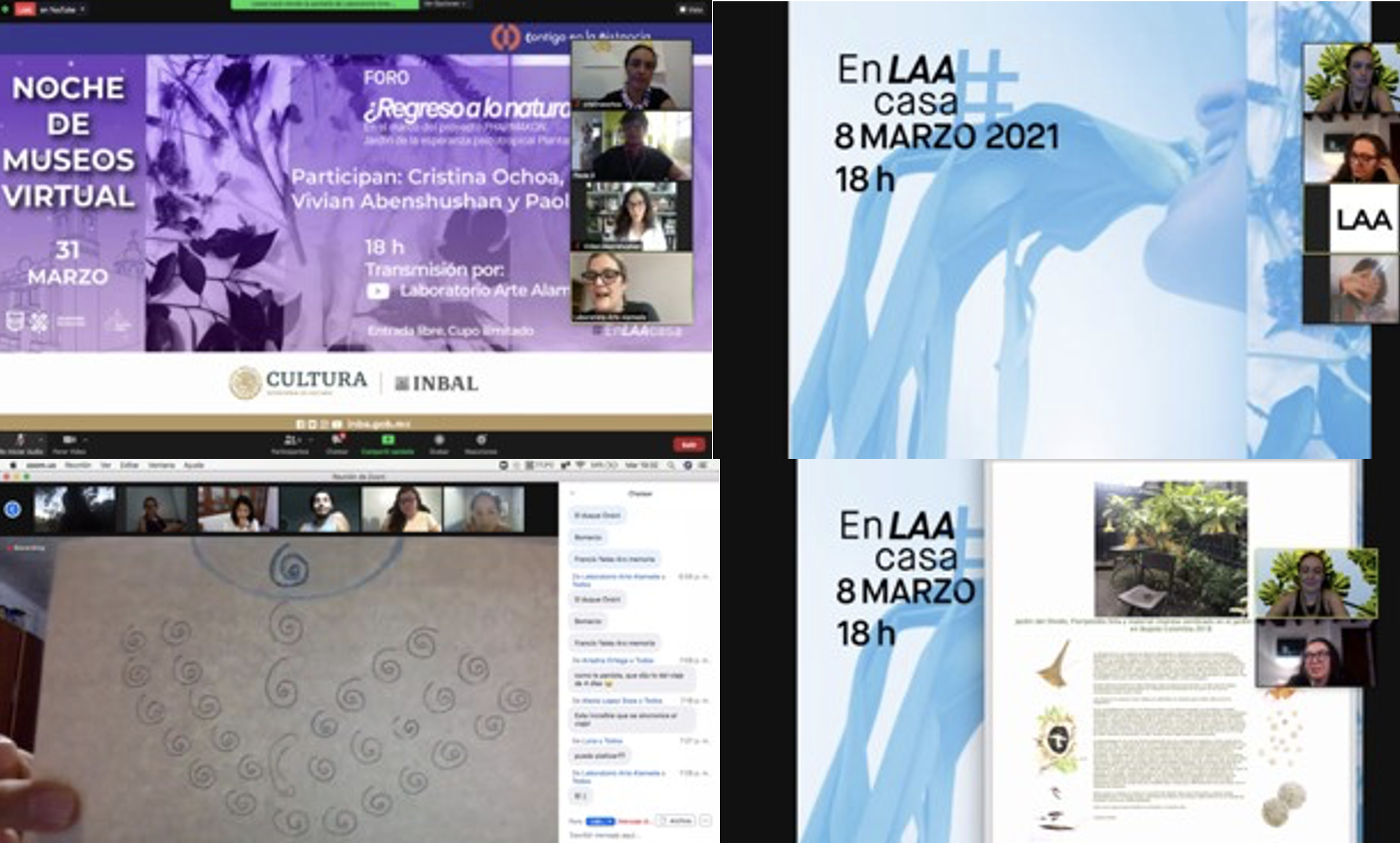
Exposition name: Virtual Museum Residency (Pharmakon)
Location: Laboratorio Arte Alameda Museum, Mexico City
Date: Mar – Apr 2021
Description: Pharmakon began just before the COVID-19 pandemic, when I was invited by curator Lucía San Román to develop a project in the garden of the Laboratorio de Arte Alameda (LAA) museum in Mexico City. However, due to the onset of the confinement, the project transformed into a virtual residency. From March to April 2021, we adapted the initiative into an online format, offering seminars and courses focused on medicinal plants and their cultural, therapeutic, and symbolic uses. -
Arafura – Garden of Psychotropical Hope
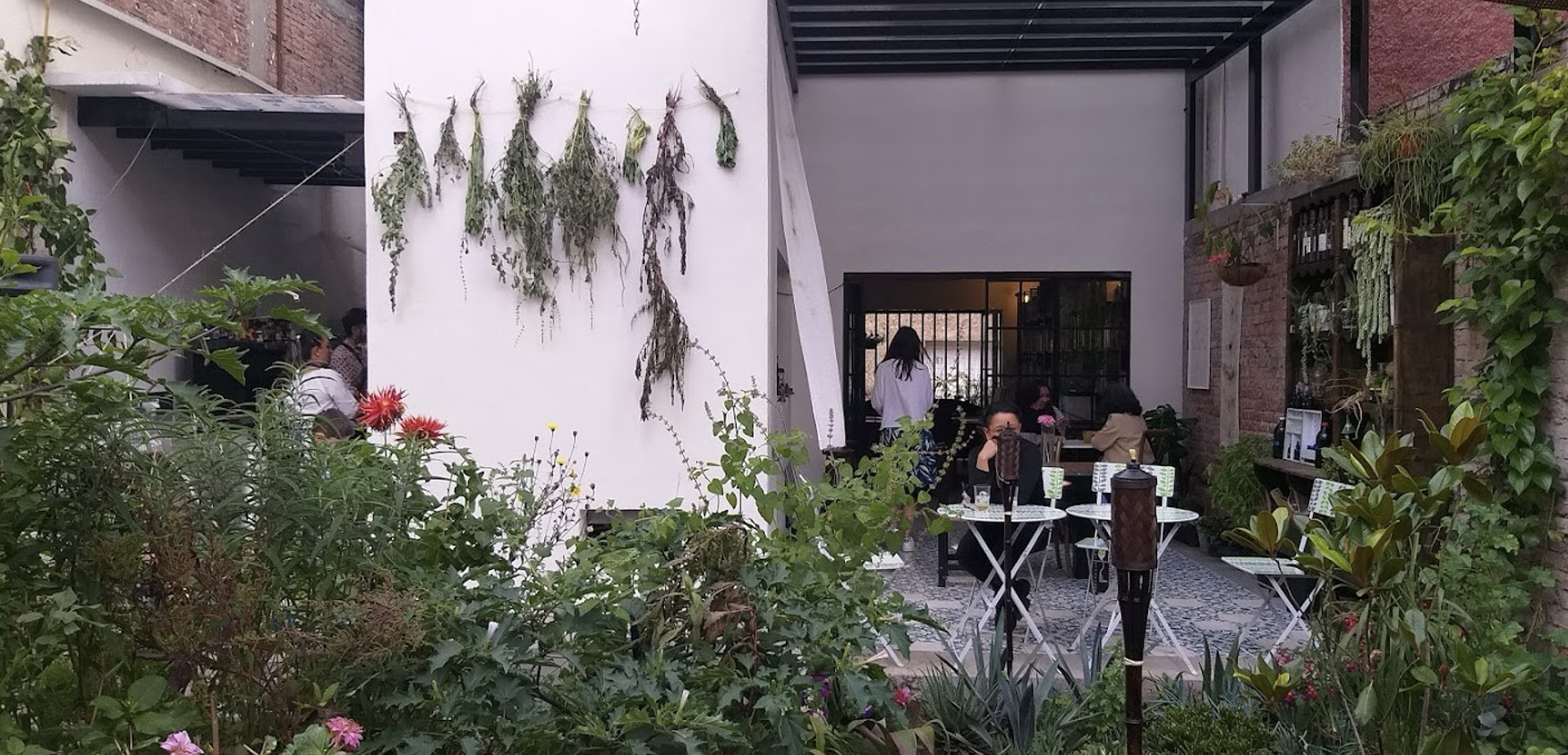
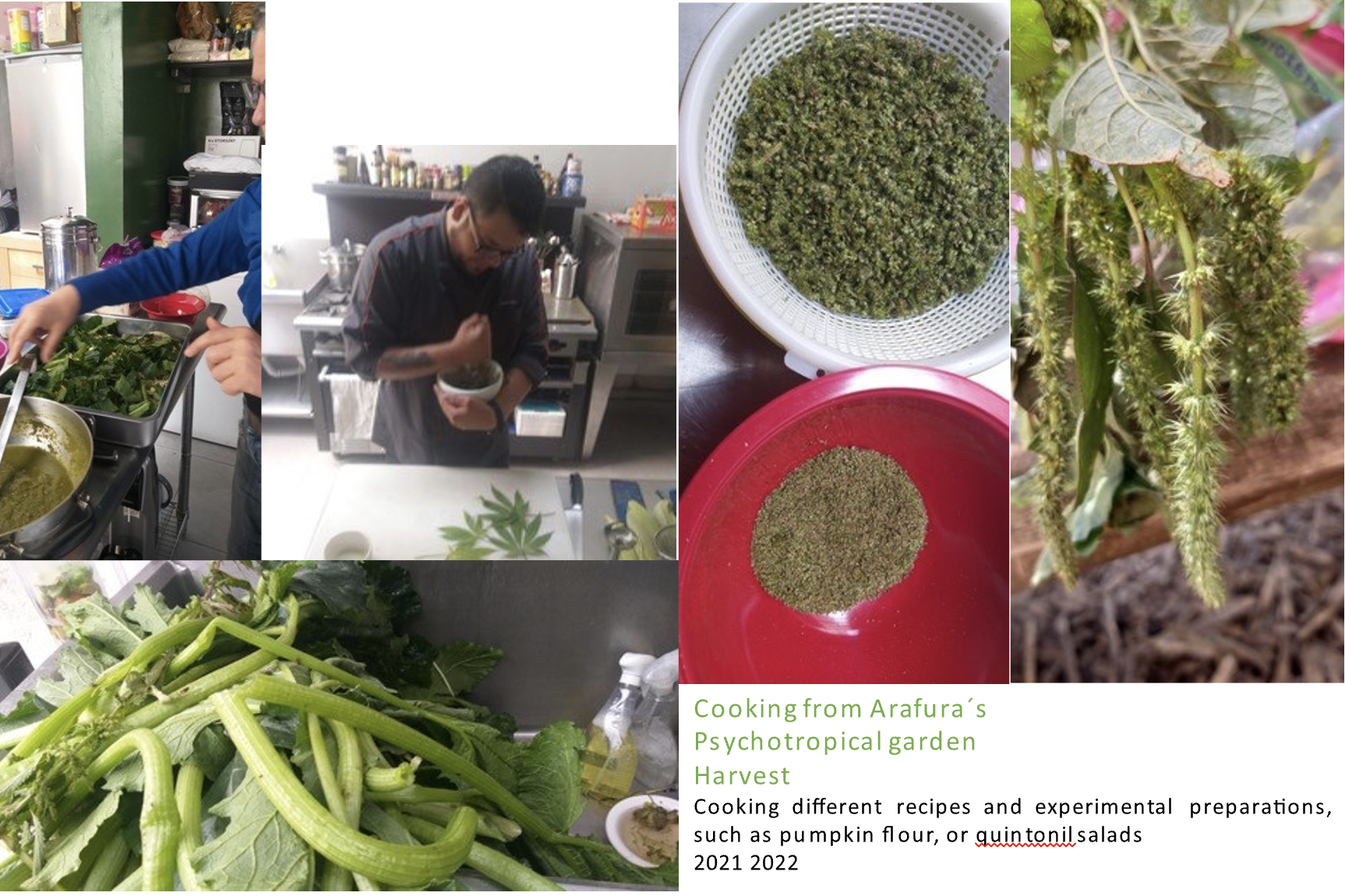
Exposition name: Arafura – Garden of Psychotropical Hope (Pharmakon)
Location: Popotla, Mexico City
Date: 2021
Description: Design and production of the garden as a living art work, from the star of the rebuilding of the house, now a cultural art center dedicated to residencies for art curators, artist and research in art and ecofeminism.
Related external links:
PHARMAKON: Jardín de la Esperanza Psicotropical by Arafura MX
https://www.arafura.mx/pharmakon.html
Back to the Art Expositions List >> -
Pharmastar Sinapsis Game
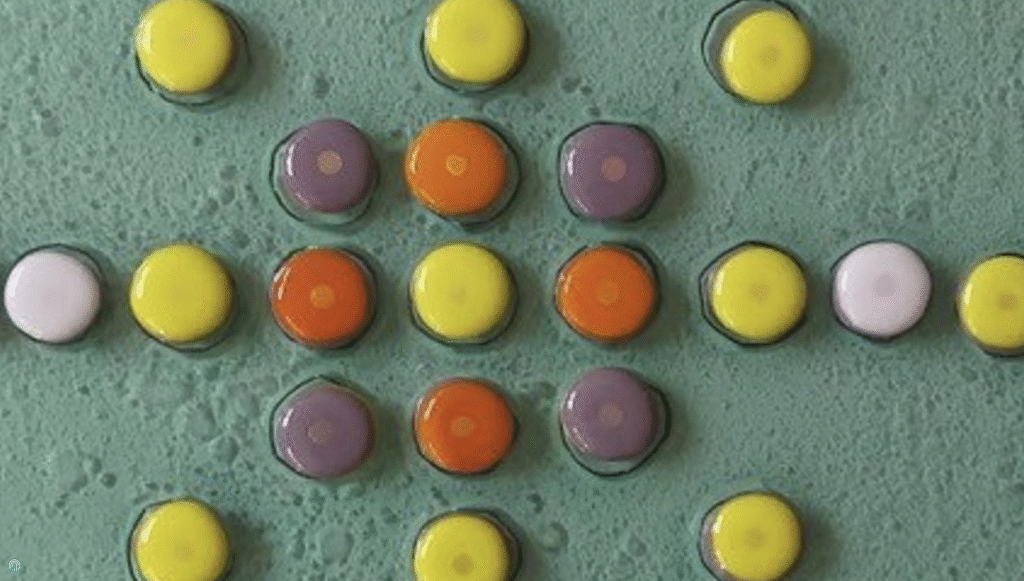
Exposition name: Pharmastar Synapsis Game
Location: Galeria del Agua Altzayanca. Tlaxcala
Dimensions: Variable dimensions, 31 cm x 31 cm. Plus 25 Chips
Date: 2021
Description: Synapsis is the process through which neurons communicate via neuro-transmitters produced by the body. This interactive piece explores how love emerges from brain chemistry. Each color represents a neurotransmitter: yellow (serotonin), orange (adrenaline), white (dopamine), and violet (oxytocin). When balanced, these chemicals create sensations of joy, empathy, desire, and well-being. When imbalanced, they can lead to issues like depression. Diet, habits, and emotions all influence this balance. Players begin with chips outside the board, like in Chinese checkers, symbolizing how external factors—habits, addictions, routines—affect our mental chemistry. This is more than a game; it’s a reflection on how love and well-being are deeply rooted in our biology and everyday choices.
Back to the Art Expositions List >>